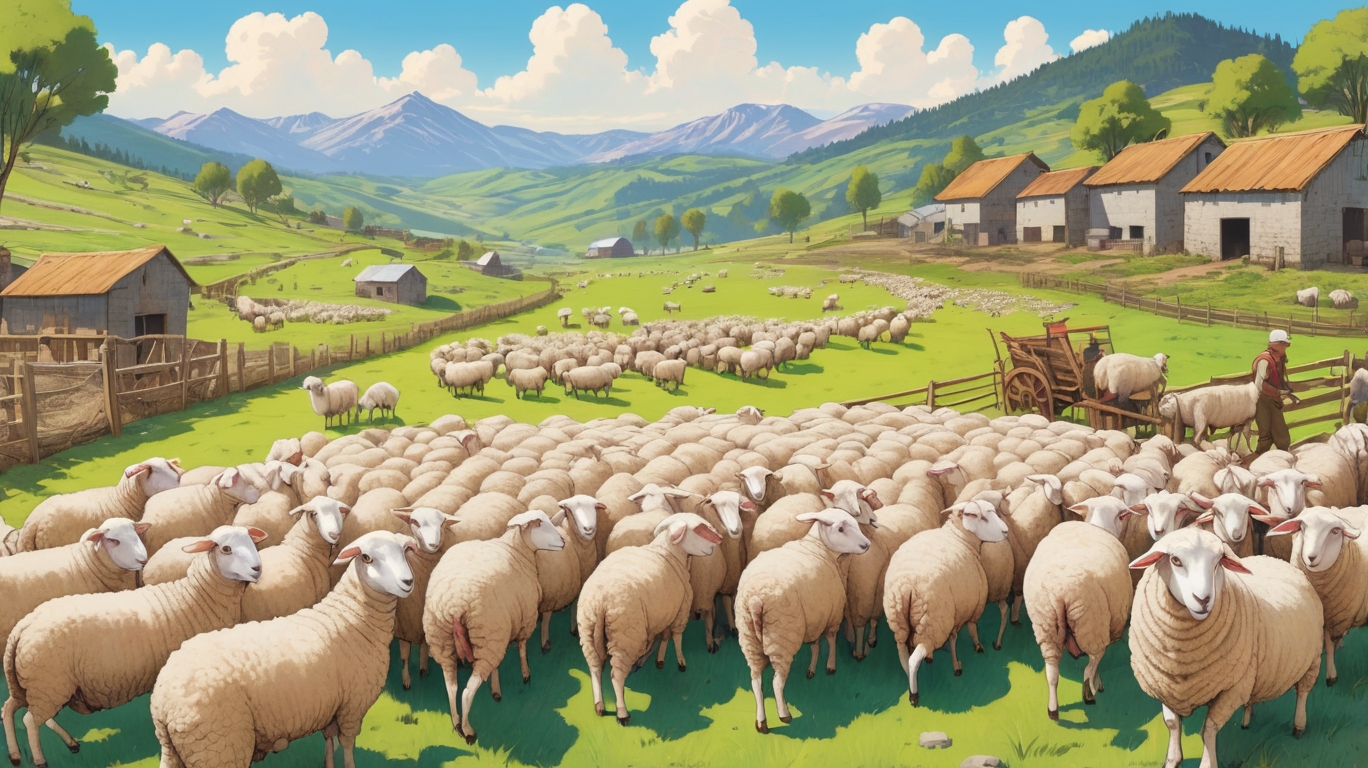Sheep and Goat Farming: A Profitable Venture
In the world of agriculture, few ventures offer the balance of simplicity and profitability quite like sheep and goat farming. These small ruminants are hardy, adaptable, and in high demand for their meat, milk, and fiber. Whether you’re a seasoned farmer or a beginner looking to diversify your income, raising sheep and goats can be a rewarding and sustainable business.

Why Choose Sheep and Goat Farming?
1. Low Initial Investment
Compared to cattle or poultry farming, sheep and goats require relatively low startup costs. They don’t need expensive housing or large tracts of land, making them ideal for small-scale farmers.
2. High Demand for Products
Sheep and goat products—such as meat (chevon and mutton), milk, wool, and hides—are consistently in demand. Goat milk, for instance, is prized for its digestibility and nutritional benefits, while sheep wool remains valuable in the textile industry.
3. Efficient Feed Converters
Sheep and goats are excellent at converting low-quality forage into high-quality protein. They thrive on grasses, shrubs, and crop residues, reducing the need for expensive feed.
4. Multiple Revenue Streams
A single flock can generate income from various sources:
- Meat production – Fast-growing breeds can be sold for slaughter within months.
- Dairy products – Goat and sheep milk can be processed into cheese, yogurt, or soap.
- Fiber and hides – Sheep wool and goat skins are used in textiles and leather goods.
- Breeding stock – Selling healthy, high-quality animals to other farmers can be lucrative.
Getting Started: Key Considerations
1. Selecting the Right Breeds
Choose breeds based on your primary goal (meat, milk, or fiber) and local climate. Some popular options include:
- Sheep: Dorper (meat), Merino (wool), Awassi (milk).
- Goats: Boer (meat), Saanen (milk), Angora (fiber).
2. Proper Housing and Fencing
While sheep and goats don’t need elaborate shelters, they do require protection from extreme weather and predators. Secure fencing is essential, as goats are notorious escape artists.
3. Nutrition and Grazing Management
A balanced diet ensures healthy growth and productivity. Rotational grazing helps maintain pasture quality and prevents overgrazing. Mineral supplements may also be necessary.
4. Health Management
Regular vaccinations, deworming, and hoof trimming are crucial to prevent diseases. Working with a veterinarian can help you establish a proper health care routine.
Challenges and How to Overcome Them
Like any farming venture, sheep and goat farming comes with challenges:
- Predators – Guard dogs or donkeys can help protect your flock.
- Market fluctuations – Diversifying products (e.g., selling both meat and milk) can stabilize income.
- Disease outbreaks – Quarantine new animals and maintain strict hygiene protocols.
Final Thoughts
Sheep and goat farming is a flexible and profitable agricultural venture with relatively low barriers to entry. By selecting the right breeds, managing resources wisely, and staying informed about best practices, you can build a thriving business that provides steady income while contributing to sustainable farming.
If you’re considering this path, start small, learn continuously, and enjoy the journey of raising these resilient and valuable animals.
Would you like more insights on a specific aspect of sheep or goat farming? Let us know in the comments!